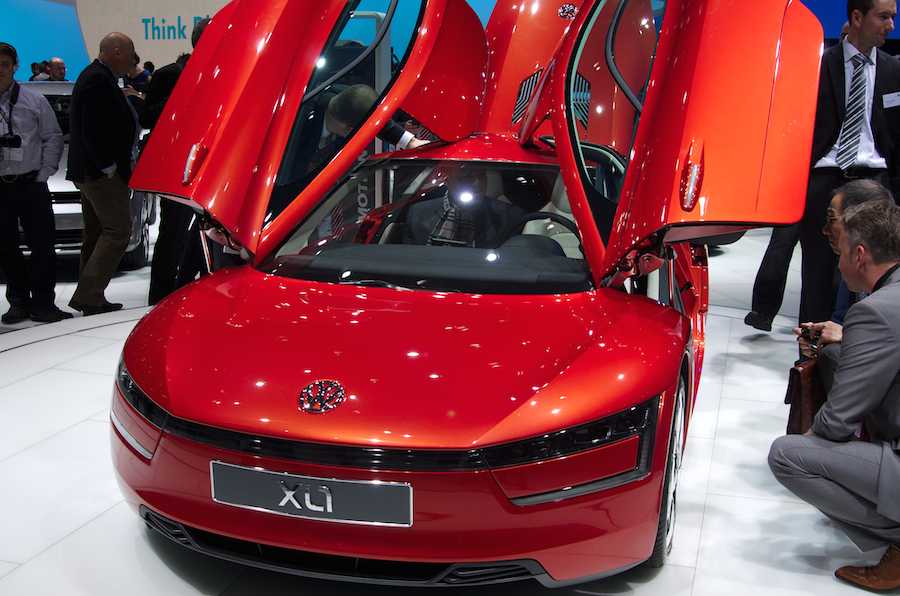Innovation at the 2014 Paris Motor Show
So, imagine you’re going into a car show, ready to be astonished by the newest creations of the motor world. Which brands’ releases would you be most excited to see? Lamborghini? Of course. Ferrari? Certainly. Volkswagen? Maybe not so much…
Well, you may be surprised to hear that after the 2014 Paris Motor Show, the topic of conversation for many wasn’t a Lamborghini or Aston Martin, but rather, a new beauty from Volkswagen.
I am not saying that the Volkswagen XL Sport was the best, or most desired, car, but it was, by far, the most creative and intriguing of them all. This new car is Volkswagen’s sport-improvement to a concept car that shocked the motor world back in 2002. The 1-liter car, designed off Dr. Ferdinand Piech’s concept of a full-sized coup that could travel over 100 kilometers on a single liter of gas, first debuted back in 2002.
Piech’s idea was demonstrated when he drove the prototype between Wolfsburg and Hamburg as part of the Volkswagen annual meeting of stockholders. Since then, Volkswagen has made many improvements to this concept, resulting in the L1 Prospect in 2009 and the XL1 in 2011. The XL1 is advertised as, and statistically is, the most fuel efficient (261 mpg) and aerodynamic (0.189cd) production car in the world. It achieves this most notably through the use of revolutionary carbon-fiber reinforced polymer (CFRP) that is very strong, yet lightweight. The alloy weighs only around 20% of the weight of the normal steel that is used to make traditional body-panels.
Furthermore, the car uses a combination of a .8 liter TDI diesel engine, a 5.5kWh lithium-ion battery, and a 20kW electric motor which all work together to improve fuel efficiency and reduce emissions. Surprisingly, it is the first line in this series that can actually be bought commercially; there are only 250 of these cars in existence, and with just 100,000 euros, one of these could potentially be yours. The XL-Sport is the newest advancement upon the XL1, and it hogged the spotlight in Paris.
Now, hopefully we can all understand why the unveiling of the latest model in this line of innovative cars was so breathtaking. This version improves on all the faults of its predecessor, but mostly particularly on speed and style. The XL-sport utilizes the same sleek exoskeleton as the XL1, while packing some serious speed with a Ducati engine. Furthermore, with the subtle, yet much-needed spice via the inclusion of dagger-like headlights, exposed wheels, artfully placed vents, and luminescent streaks of color, the XL-Sport succeeds in impressing any beholder.
The XL-Sport is both faster and more attractive than her predecessor. This baby hits over 160 miles per hour without a problem, while the XL1 failed to even hit 100. This new car is utterly perfect; it combines the feeling of driving a futuristic car with the adrenaline-fueled drive down the streets of Milan in a firebird Ducati. Whichever Volkswagen employee had the idea to combine the XL1’s slipstream aerodynamics with the thundering Ducati engine deserves a cookie, and probably a promotion as well.
Is it possible that this concept car is a tantalizing taste of the future of automobiles? In the near future, the most powerful of sports cars might even be able to travel 100 kilometers with only 1 liter of fuel, and while we can be optimistic, that is still uncertain. What we can be sure of, however, is that when Volkswagen bred the most fuel-efficient production car in history with the most dangerously powerful Ducati engine, the world (and audience at the 2014 Paris Motor Show) stood in awe of the young, powerful XL-Sport.
Sources: digitaltrends.com, volkswagen.co.uk

Nicholas Householder, who goes by “Nick,” is embarking on his first year at The Talon where he will be working as a Features writer. He can sometimes...









